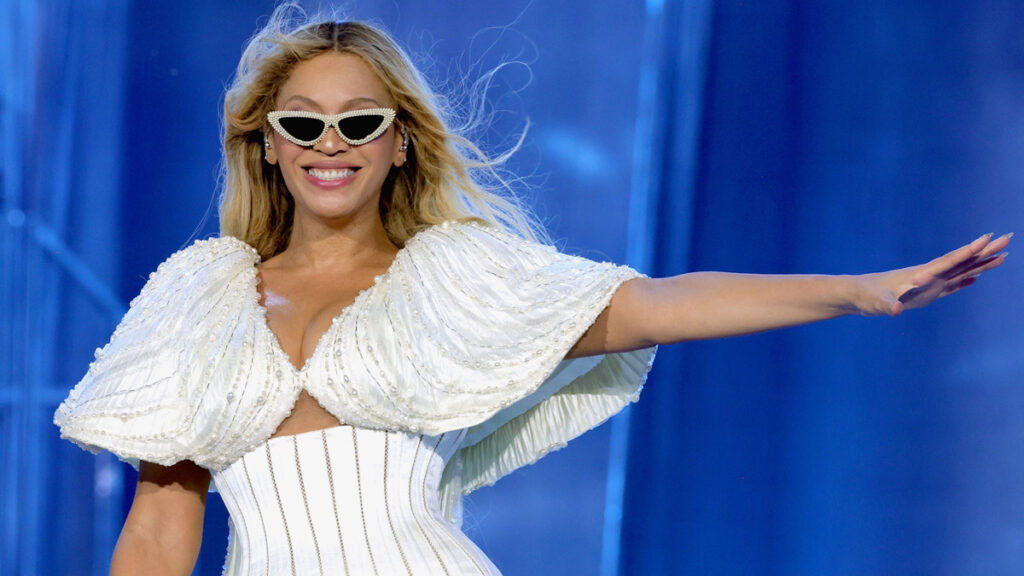One of the most revelatory sequences in Renaissance: A Film by Beyoncé features writer/director/artist Beyoncé telling people they’re wrong. In a series of clips from behind the scenes of the tour, we see the icon in conversation with a bevy of unnamed support staff, as she offers up notes on their work — things she wants to adjust, elements she thinks could be improved. She’s not mean, but she is firm, because she knows exactly what she wants.
At one point in that montage, she tells someone that a specific kind of fisheye lens that they told her didn’t exist does exist — she’s looked it up. Later in the film, we see that fisheye lens in action, and it’s clear why Beyoncé wanted it to capture more of the stage, including the backing screens — the effect created on screen is dazzling, a trio of Beyoncés coming towards the camera, larger than life, in full command.
It’s just one of many elements in Renaissance: A Film by Beyoncé that contribute to a striking self-portrait of an auteur, an artist working at the peak of her game. While, yes, Taylor Swift’s concert film arrived in theaters first this year, that movie proved to be much more of a straight-up document of The Eras Tour, as experienced by the fans in the audience. Beyoncé, meanwhile, uses this as an opportunity to not just give audiences a taste of what they missed by not making it to a stadium in 2023, but craft a portrait of who she is at this moment. It’s confessional at some points, illuminating at others. And always, always, always a good time.
The balance between documentary and actual concert footage feels pretty close to fifty-fifty, and the documentary sections, as fascinating as they can be, don’t detract from some genuine bootylicious-ness. (Certainly heads were bopping and booties were shaking in the seats at the AMC on Thursday night, though very few people actually got up and danced in my theater.)
Rather than lean into the illusion that the footage we see was shot on just one night, Bey embraces the artifice, using footage from multiple performances to create one singular experience. You know there are multiple performances being used, because from shot to shot the costumes Beyoncé and the dancers are wearing will change; the editing used to blend these moments together is nearly flawless. It also makes it nigh impossible to count just how many different costumes appear on screen, especially since you’re distracted by the dancing on display.
Yes, it’s not quite the same as being there in person, but in person you can’t see the letters spelled out on the underside of her fingernails. And the sections where the music takes center stage deliver the giddy joy you’d hope for — one stellar early run, featuring Renaissance tracks like “Cuff It” and “Energy,” is just an appetizer for a later section that showcases the ballroom culture which was such an inspiration for the album. (GLAAD released a statement on Friday morning praising the film as it “further exemplifies Beyoncé’s commitment to use her global platform to spotlight, uplift and pay tribute to the Black LGBTQ community.”)

